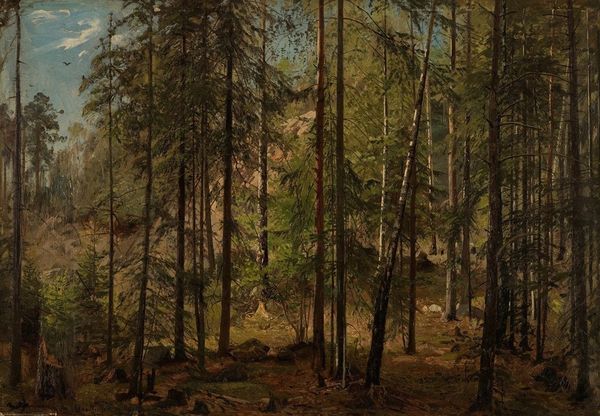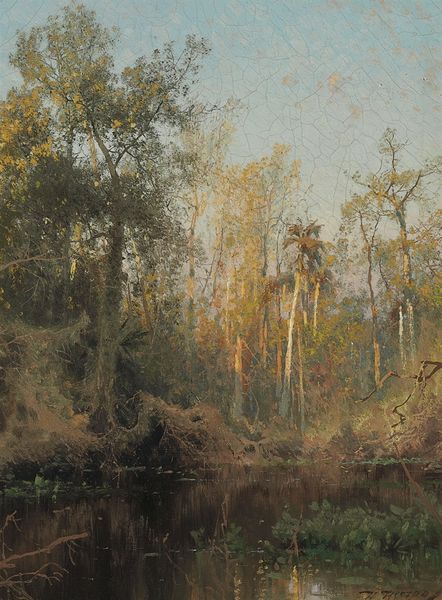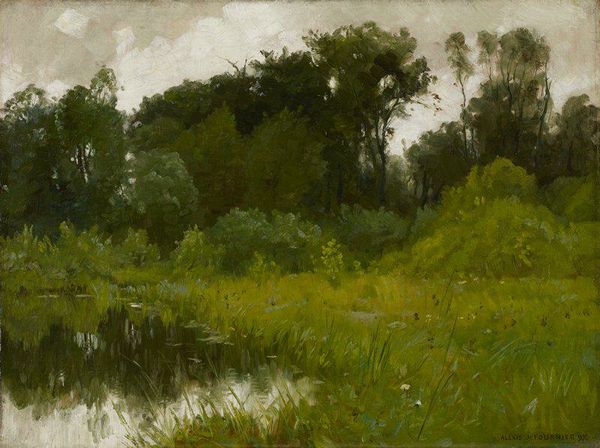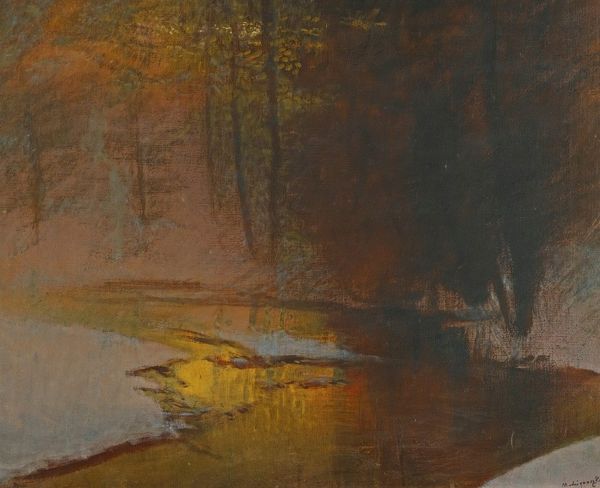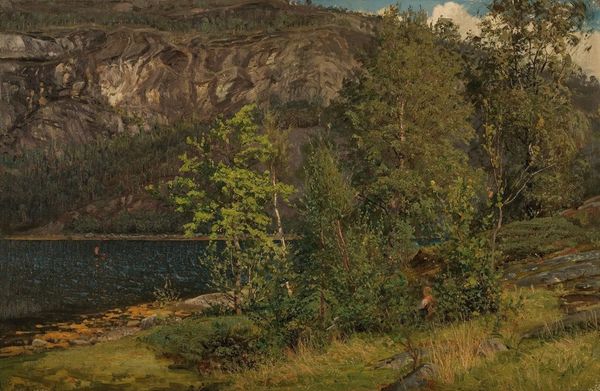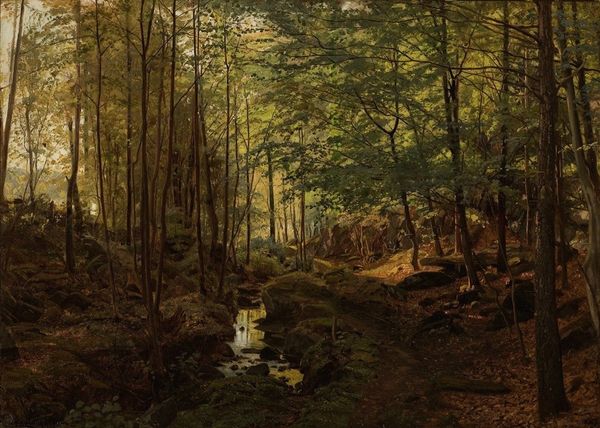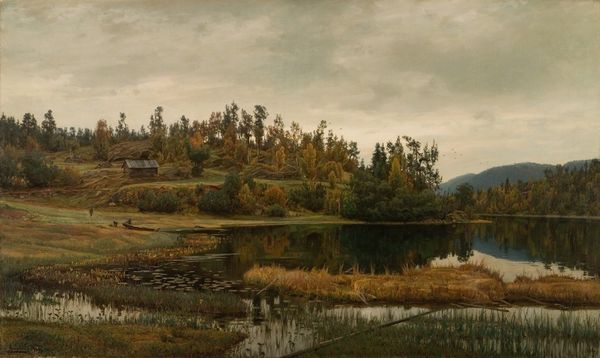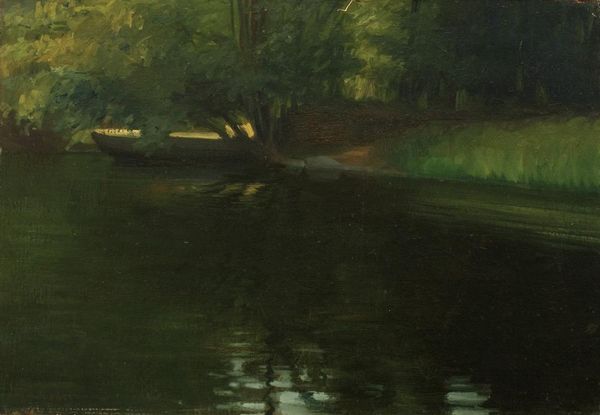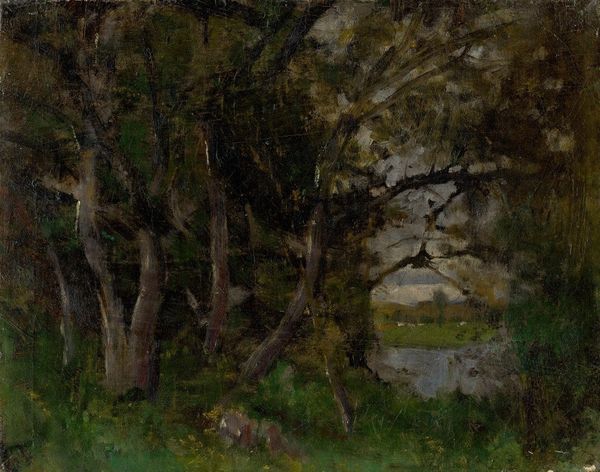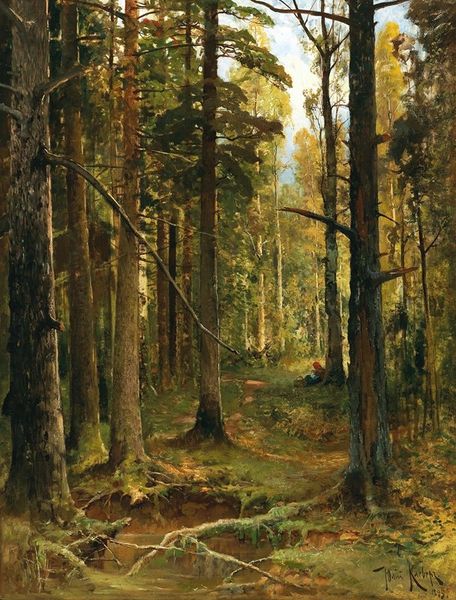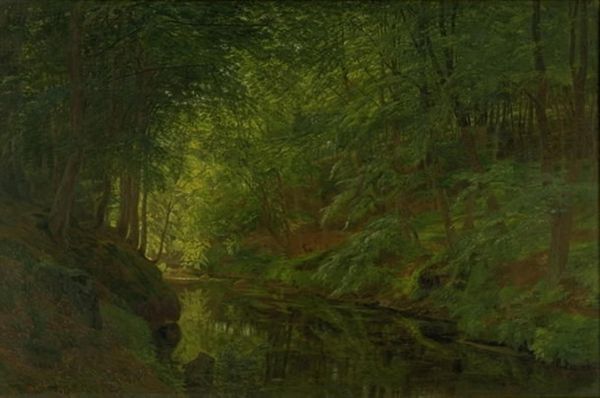
Copyright: Public Domain: Artvee
Editor: Here we have Amaldus Nielsen’s "Høst ved Risør," painted in 1894 using oil on canvas. It depicts an autumnal lakeside scene, and there's a certain stillness about it that I find quite captivating. How do you interpret this work? Curator: That stillness is deceptive. Nielsen painted this en plein air, meaning "in open air," a technique popularized by the Impressionists. Why do you think that an increasing interest in outdoor painting arose during this time? What societal factors were at play? Editor: Well, perhaps it reflected a desire to connect with nature amidst growing industrialization? Curator: Precisely. The late 19th century saw rapid urbanization, often accompanied by social upheaval and a sense of alienation. Nielsen’s almost documentary approach—his attention to detail, the impasto technique that renders the texture of the landscape—can be seen as a response, even a form of resistance. His landscape, absent of human figures, poses critical questions. How does one engage with the landscape when it becomes something external to them, perhaps something they feel excluded from? Editor: That makes me reconsider the 'romantic' tag associated with this work, It feels more grounded and conscious than pure escapism. Curator: Indeed. It's about engaging with the real, complex relationship between humanity and nature during a period of dramatic social change. Can you see in this quiet landscape hints of the conflicts brewing at that time? Editor: Now that you mention it, there is a somber tone. Maybe that stillness isn't so peaceful after all, but laden with tension. Thanks for shifting my perspective! Curator: My pleasure. Art provides ways of understanding our relationship to society and to the earth and even ways to address how these understandings become actions.
Comments
No comments
Be the first to comment and join the conversation on the ultimate creative platform.
